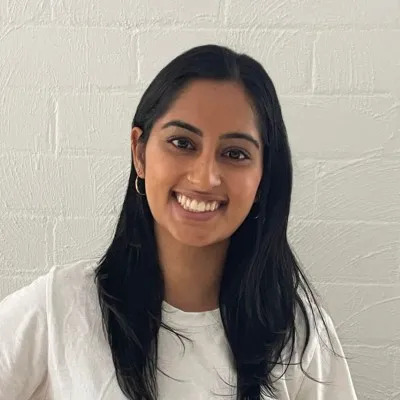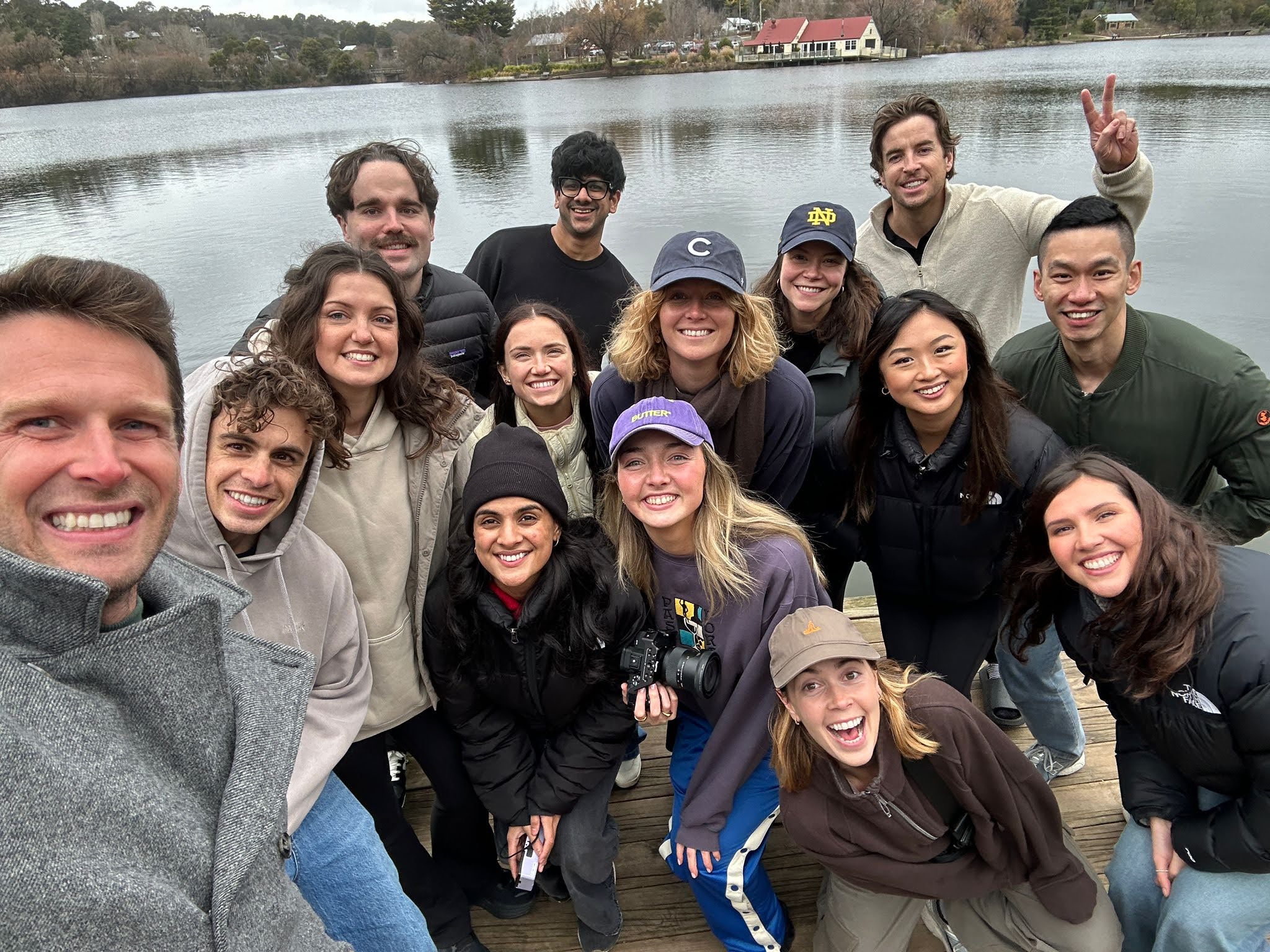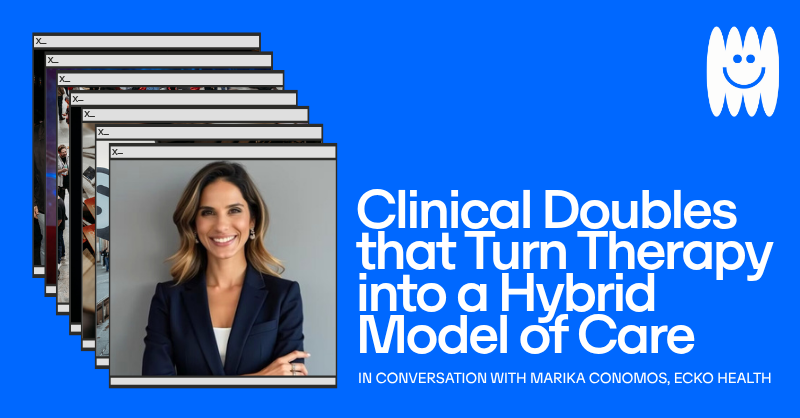Zara and Sam just wanted to help their friends sound intelligent when they went out on dates — so they launched a news-focused Instagram page.
Today, they are the co-founders of The Daily Aus (TDA), a rapidly growing social-first news platform followed by over 365,000 young people.
It’s no secret that traditional media forms are rapidly becoming redundant. Traditional media companies are attempting to innovate and understand a media landscape with little to no barrier to entry and highly selective attention.
TDA has not only disrupted the traditional news industry by capitalising on the opportunities present in today’s ‘creator economy’ but evolved the idea of what a news organisation can be, by building habits and nurturing a trusting community.
With daily Instagram posts of bite-sized news items, a daily newsletter and two podcasts, all delivered in casual, youthful language, TDA has become a recognised go-to for many young Australians to get their news fix.
“To build trust, there were two components that really led us,” Zara tells Startmate’s inaugural Media Fellowship cohort.
“The first is radical transparency, which is that if we make a mistake we own up to it straight away. The second is that we are speaking across from our peers rather than down to them.”
TDA’s building blocks of habit
TDA takes the two staples of just about every zilennial’s morning — coffee and Instagram scrolling — and turns it into an opportunity to inform young people about the news.
“We were deliberately trying to build habit into the millennial and gen-Z morning routine. That’s why the coffee cup logo came along, because we wanted to be associated with something easy like drinking coffee. The idea was that you could consume our news in under five minutes with a coffee,” explains Zara.
The team delivers on their promise of “easy” with all their content offerings, whether it be simple and digestible Instagram posts, 10–15-minute podcast episodes, or a newsletter that’s segmented such that you can read the news in 1 minute or 10 minutes depending on how much depth of information you want.
As a result, TDA’s audience has become accustomed to the recurring nature of its content and stark brand elements. Ultimately, this reliability allows TDA’s audience to feel “in the know”, deepens their connection with the TDA brand and builds trust.
As young people themselves, the team behind TDA have used their own experiences as well as that of those around them to understand how to reach people in today's attention economy. And what’s resonated with TDA’s audience, even beyond their crisp colour scheme and sharp bullet point posts, is consistency.
“We decided we would try to build a habit with an audience, and we hoped that would translate into audience growth. The thing that was really valuable in those early days was that we did it everyday. It happened no matter what was going on,” says Zara.
For quite a while, this envisioned audience growth didn’t happen. “It's demoralising when you're putting your heart and soul into something and there's no audience to see that,” Zara admits.
However, what kept Zara and Sam going was hearing the “personal stories and anecdotes” of young people sharing news they read on TDA’s Instagram page with their bosses or their family. And soon enough, the commitment of posting 4-5 times per day on Instagram, sending out a 7.00am newsletter each morning, and publishing a daily 10-minute podcast translated to a habit built with a growing audience.
Turning passive audience members into engaged community members
While TDA’s audience initially passively consumed content by liking or simply reading Instagram posts, these followers were soon increasingly engaging with TDA’s content by resharing, commenting and subscribing.
“I just remember one morning waking up and going through Instagram and every story on my newsfeed was a Daily Aus post that had been shared by somebody else,” recalls Zara.
A great tool to describe this momentum is the commitment curve, originally developed by Darrel Conner and Robert Patterson in 1982. The idea is that over time, your members’ level of commitment will increase, as will their willingness to contribute to your community.
Joining TDA’s growing audience doesn’t require much commitment. Frankly, it’s as easy as following their Instagram account. The low barrier to entry means a newcomer isn’t overwhelmed with going to great lengths to join the community. Then, through increased interaction with consistent and trustworthy content, the TDA audience goes on a journey alongside the organisation, and becomes more than just audience members, but rather, community members.
As a result, TDA’s community is increasingly engaged, whether it be through comments on Instagram posts or answering polls and surveys. This form of engagement is also known as ‘asynchronous experiences’.
David Spinks, the Co-Founder of CMX, the world's largest network of community professionals, says in his book Business of Belonging:
“The real community magic happens when they participate in a shared experience.”
These shared experiences can be described as synchronous or asynchronous. Synchronous experiences are live experiences, usually an event or meet-up. These can be both in-person or virtual experiences. On the other hand, asynchronous experiences are interactions where members don’t need to be present in the space at the same time. Think Discord or Slack channels you’re part of where you can tune in and out of the conversation at your convenience.
The idea is that both types of experiences enhance one another. Online spaces that provide asynchronous experiences are convenient and reduce the barrier of participation in the community. They help members connect over distance and time. Live events then bring members together, helping them “connect more intimately, have deeper conversations and create serendipity.”
In most cases, the strongest communities provide both experiences.
Making community your organisation’s strongest muscle
CMX’s 2022 Community Industry Report states that “community teams continue to evolve from a nice-to-have to a more mature and complex department within business.” The report (which surveyed 778 community professionals in December 2021 and January 2022) found that 22% of companies reported having a dedicated community team, up from 15% in 2021. This is a clear sign that the value of community within a business is increasingly becoming more important.
Not every growing organisation can resource a dedicated community manager or community department. TDA started building a community with a team of two, which has only recently grown. Yet, it’s clear to see just how far the value of community can go. The habits TDA has built with its audience and its consistency of ‘showing up’ has developed a strong sense of trust, converting passive audience members into active, engaged community members.
As Spinks says, “ultimately, what makes a business successful is the same thing that makes a community successful: Owning a topic in people’s minds. Building community is one of the most powerful ways to establish your brand as the most trusted leader in a category, or to get people bought into a category you’re working to create.”
TDA’s success in capturing the trust of young Australians has been noticed by traditional media, including The Australian, which has recently launched its own youth-focused news platform called The Oz, as well as investors who have funded TDA.
And TDA is expanding beyond news content, generating revenue through advertising and merchandise sales, and recently hosting its first synchronous events, dubbed ‘Politics at the Pub’, in Sydney and Melbourne. These opportunities are ultimately a testament to the TDA team’s ability to invest in and grow their community as well as themselves.
If anything, this emphasises that the power of community should not be underestimated. After all, we’re all creatures of habit. Building a great community is about creating an immovable sense of trust with your members. Once we connect with a community that fits a niche aspect of our identity, we keep going back to it for a sense of belonging.
The Daily Aus has not only disrupted the Australian news industry by bringing young voices to the forefront, it’s also built a sense of belonging for young Australians.
So, while back in 2017, Zara and Sam just wanted to help their friends date, they’ve now assembled a team which helps more than 365,000 people expand their views, cast informed votes, stay in-the-know with world news, and probably slay the dating game too.








